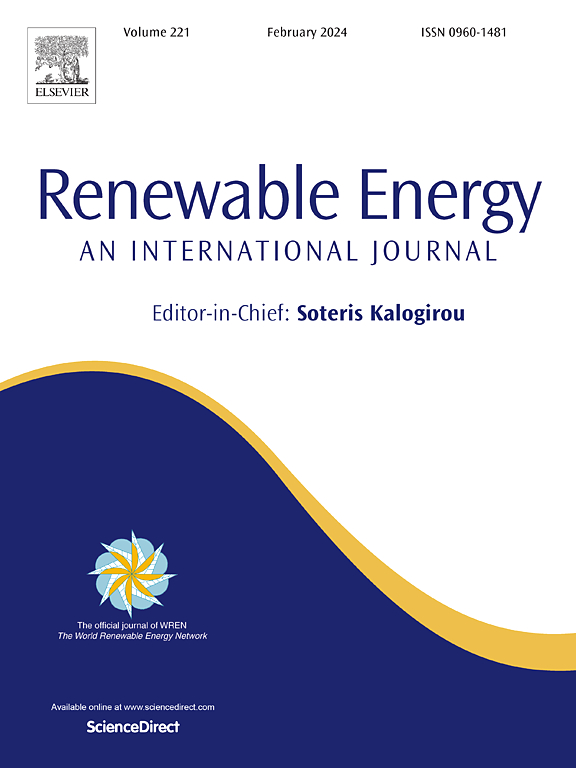高度光伏自消费整合中的非最优选择:以西班牙产消费者为例研究
IF 9.1
1区 工程技术
Q1 ENERGY & FUELS
引用次数: 0
摘要
缓解温室效应和实现可持续生产系统的紧迫性正在推动探索新的清洁能源选择。事实上,一些欧洲国家目前正在经历能源转型,其特点是日益强调可再生能源,特别注重促进采用自用光伏系统。其中,太阳能因其固有的无污染而成为特别有前途的候选者。然而,由于其固有的局限性,包括产量的季节性和每日波动以及对天气条件的依赖,光伏能源通常不被认为是可调度的资源。因此,为了确保产消者在配电网上安装的光伏发电装置为系统提供的价值获得公平的补偿,应设计补偿机制以反映其电力生产的动态价值。在此框架下,本文通过估算最合适的光伏安装方向来描述和评估年度经济利润与潜在发电量减少之间的权衡。为了分析未来的电力系统与潜在的高光伏入户,不同的实际光伏装置代表了当前西班牙的产消费者概况作为案例研究,评估了2640种不同的发电概况。事实上,在过去几十年里,西班牙在广泛采用光伏(PV)系统方面是一个杰出的研究案例。这种激增可归因于安装相对容易和光伏技术具有竞争力的价格。值得注意的是,西班牙的光伏发电装机容量增长惊人,仅去年一年就增长了近30%。结果为这种特定的非最佳定向提供了许多好处。经过一整年的运行,这些发现得到了证实,尽管与最佳生产方向相比,能源产量较低,但年度经济效益有所增加。本文章由计算机程序翻译,如有差异,请以英文原文为准。

Alternative non-optimal orientations in highly PV self-consumption integration: Exploring Spanish prosumers as a case study
The urgency to mitigate the greenhouse effect and achieve sustainable production systems is driving the exploration of novel clean energy options. Indeed, some European nations are currently undergoing an energy transition characterized by a growing emphasis on renewable energy sources, with a particular focus on promoting the adoption of self-consumption photovoltaic systems. Among these, solar energy stands out as a particularly promising candidate due to its inherent lack of pollution. However, Photovoltaic (PV) energy is generally not considered a dispatchable resource due to its inherent limitations, including seasonal and daily fluctuations in output, as well as dependence on weather conditions. Therefore, and aiming to ensure that PV installations from prosumers on the distribution grid receive fair compensation for the value they provide to the system, reimbursement mechanisms should be designed to reflect the dynamic value of their electricity production. Under this framework, this paper describes and assesses the trade-off between annual economic profits and potential reductions in electricity generation by estimating the most appropriate PV installation orientations. To analyze future power systems with potentially high PV integration into households, different real PV installations representing current Spanish prosumer profiles are included as case study, assessing 2640 different generation profiles. Indeed, Spain exemplifies a remarkable case study in the widespread adoption of photovoltaic (PV) systems over the past few decades. This surge can be attributed to the relative ease of installation and competitive pricing of PV technology. Notably, the installed capacity of PV power in Spain has witnessed impressive growth, expanding by nearly 30% in the past year alone. Results provide numerous benefits for such specific non-optimal orientations. These findings, confirmed after a full year of operation, include an increase in annual economic benefits in spite of a lower energy production compared to the optimal-producing orientation.
求助全文
通过发布文献求助,成功后即可免费获取论文全文。
去求助
来源期刊

Renewable Energy
工程技术-能源与燃料
CiteScore
18.40
自引率
9.20%
发文量
1955
审稿时长
6.6 months
期刊介绍:
Renewable Energy journal is dedicated to advancing knowledge and disseminating insights on various topics and technologies within renewable energy systems and components. Our mission is to support researchers, engineers, economists, manufacturers, NGOs, associations, and societies in staying updated on new developments in their respective fields and applying alternative energy solutions to current practices.
As an international, multidisciplinary journal in renewable energy engineering and research, we strive to be a premier peer-reviewed platform and a trusted source of original research and reviews in the field of renewable energy. Join us in our endeavor to drive innovation and progress in sustainable energy solutions.
 求助内容:
求助内容: 应助结果提醒方式:
应助结果提醒方式:


